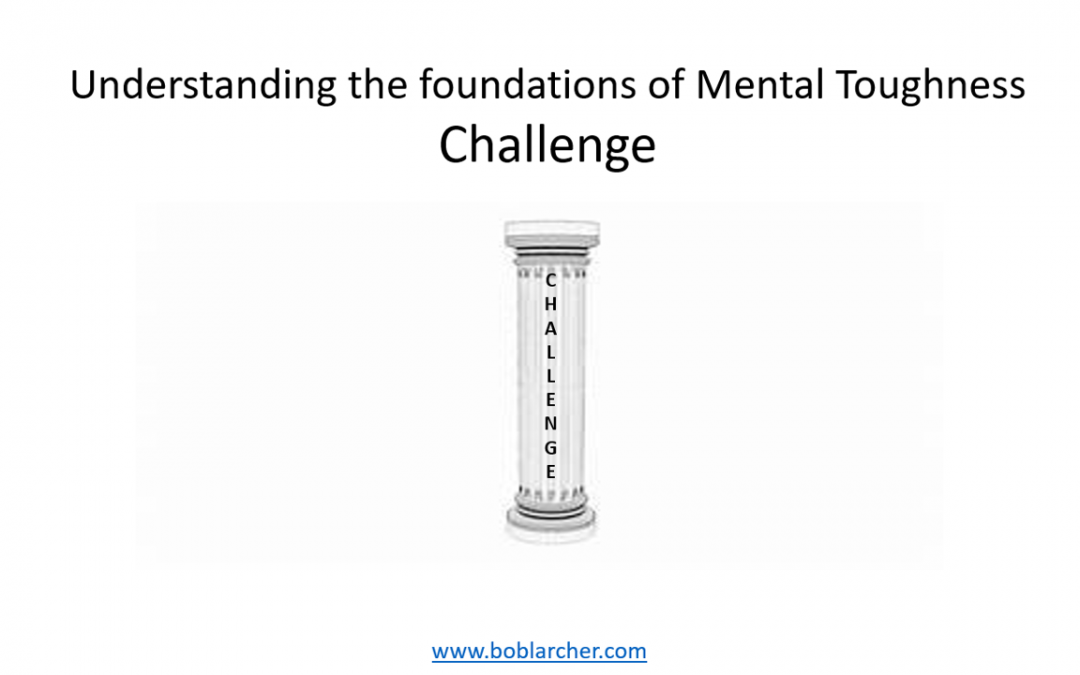As I wrote in a previous article (http://boblarcher.com/mental-toughness/mental-toughness-the-end-of-an-era/), Mental Toughness is made up from four components, or pillars – Confidence, Challenge, Commitment and Control.
Each of these pillars is built on two foundations and it is the foundations that affect how you do at work, your relationships, how you handle setbacks, even how you reach your goals.
In this article I will focus on the Challenge pillar.
Challenge is built on Risk Orientation (willingness to take risks) and Learning Orientation (willingness to learn).
I’ll start with Risk Orientation, this is essentially about embracing challenges and seeing them as chances to grow.
It means being willing to step outside your comfort zone, trying new things and embracing the unknown. It’s not about being reckless but taking calculated risks. Risks that will help you to grow the most – when you push yourself beyond what you’re used to.
In fact, it is about stepping outside your comfort zones – physical, emotional, mental, spiritual …
Taking on a project that seems a little intimidating at first, speaking up in a meeting when you usually wouldn’t, working with people who have different values to you, discussing subjects that you do not master.
Those with low Risk Orientation tend to respond poorly to competitive people and see challenges as a potential threat. They avoid situations where they feel “uneasy” and expect to fail – they like the status quo and keep a low profile.
Those with high Risk Orientation tend to thrive on competition and are motivated by competitive people. They embrace challenges even when success is uncertain and expect to succeed. They readily volunteer for new activities and kind of enjoy feeling “frightened”
Challenge for the sake of challenge is one thing, but in Mental Toughness terms it’s about learning from the challenge, this is where Learning Orientation comes in – the second of the Challenge foundations.
This is about seeing both successes and failures as chances to learn; instead of beating yourself up over a mistake and taking a “win” for granted. It’s about taking time to figure out what happened and learn from it, learn from it so you can do better next time.
Identifying what went wrong and avoid repeating it and identifying what went well and building on it.
Those with low Learning Orientation tend to see failure as a “failure” and feedback as a list of their faults. They often hide or ignore mistakes and quickly move on to the next thing. They are limited in “how” they learn and often forget what they have learned
Those with high Learning Orientation tend to see failures as opportunities for learning and feedback as an opportunity to improve. They enjoy learning new things and deliberately stretch themselves. They Create time to reflect, have a variety of learning approaches and keep a learning log – learning is important for them.
Again, it is the contribution of both foundations to the challenge pillar.
Those low in both Risk Orientation and Learning Orientation like keeping things the way they are and don’t really think about what they can learn from what’s happening.
Those low in Risk Orientation but high in Learning Orientation won’t take many risks but they do take time to learn from what happens to them.
Those high in Risk Orientation but low in Learning Orientation are so busy chasing the next opportunity, that they don’t have time to learn from the outcomes.
Those high in both Risk Orientation and Learning Orientation enjoy taking risks and systematically learn from the outcomes – be they good or bad.
So, the challenge pillar is all about having a go and learning through doing.
If you are curious to know more about Mental Toughness you can take a look at more articles here www.boblarcher.com/category/mental-toughness/.
And, if you would like to measure and start developing your mental toughness, do not hesitate to contact me at boblarcher@boblarcher.com

I help people to develop their interpersonal skills, usually within a leadership or teamwork context. If you are looking to develop your leadership, I might be able to help. I’ve been doing this for almost 40 years; roughly four thousand days of seminars, workshops, conferences, coaching, offsites, webinars, etc. – put back-to-back that makes almost ten “full” years.



